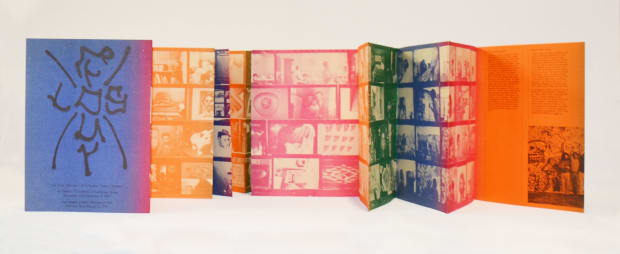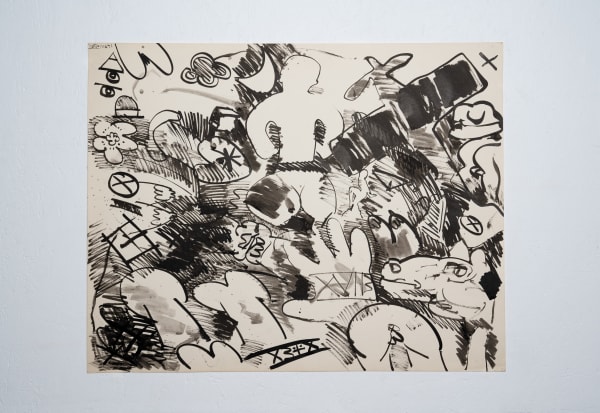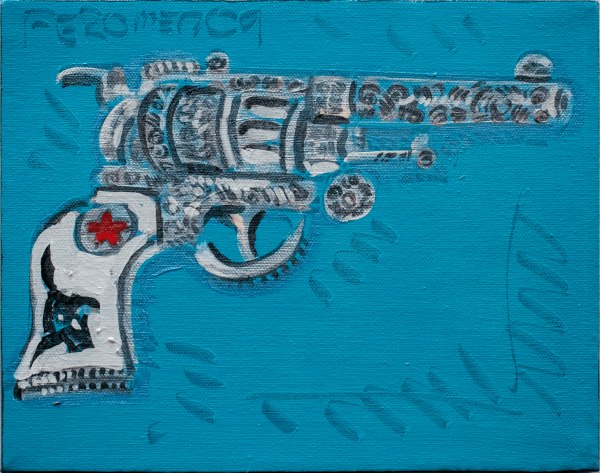-
De aquí y de allá: Frank Romero, A Survey
CURATED BY RAFAEL BARRIENTOS MARTÍNEZ -
Ruiz-Healy Art is pleased to present De aquí y de allá: Frank Romero, A Survey, a concurrent solo exhibition of works by Los Angeles-based artist Frank Romero, curated by Rafael Barrientos Martínez at our New York City and San Antonio galleries. De aquí y de allá: Frank Romero, A Survey, will be on view at our San Antonio gallery from Thursday, December 5th, 2024, to January 25th, 2025. This collection of work unravels the cultural mosaic of Romero's lived history as a pioneer of the Chicano/a movement, encompassing a variety of visual narratives influenced by his hometown of Los Angeles, California, and his travels across the greater American Southwest. This year marks the 50th anniversary of the influential Chicano art collective Los Four, of which Romero was an original member. The group helped redefine Mexican American artistic expression and bring attention to Chicano art in an institutional setting.
-
 Frank RomeroRecuerdo, 1982Oil on canvas70 x 109 in
Frank RomeroRecuerdo, 1982Oil on canvas70 x 109 in
177.8 x 276.9 cm -
"In my training, I was told that purple is the opposite of yellow and all of that stuff, but you know, I don’t use that as a theory; I just react instinctively to how I feel. It’s emotional” - Romero in an interview with the Smithsonian American Art Museum for the exhibition Our America: The Latino Presence in American Art (2013-14).
-
 Frank RomeroLos Four: Almaraz / de la Rocha / Lujan / Romero, 1974Artist's Book designed by Frank Romero
Frank RomeroLos Four: Almaraz / de la Rocha / Lujan / Romero, 1974Artist's Book designed by Frank Romero
Produced at the School of Fine Arts, University of California, Irvine
1500 copies printed by Toyo Printing Los Angeles
Photographs are by Frank Romero and Hal GlicksmanOne continuous 10 x 118 in sheet printed recto only -
“Within the LACMA EXHIBITION, the artists presented collaborative spray-paint paintings, social realist works, ephemeral and large scale sculptures, and installations that referenced home altars or ofrendas filled with personal ephemera, folk art, and everyday items. Overall, this exhibition and its accompanying programming challenged considerations of how we define both Chicana/o art as well as fine art overall, a postcolonial intervention that exposed exclusionary legacies while leaving the door open for those to come." - Rafael Barrientos Martínez
-
-
Romero’s focus on developing his style became an exponential feat once he advanced to university in 1959 and eventually finished his Bachelor of Fine Arts degree in 2011 from California State University, Los Angeles. Romero’s early graphite pieces from the 1970s draw on inspiration from Pablo Picasso and Rico Le Brun, whose experimental dwellings on the organic, human form throughout mixed media inspired many of Romero’s works. As seen in Untitled (Black Drawings), the artist pulls from personal references and familiar images to craft a lively scene in graphite composed of fragmented imagery of human anatomy. - Margarita Nieto, "Conversation with artist: Frank Romero." Latin American Art (1991).
-
Frank Romero’s Chicano Iconography series demonstrates the artist’s ability to emulate intricately woven textures on print. Derived from an established lexicon of Chicano symbols, Romero creates these striking designs by producing a complex geometric form printed in layers of vivid color. The series was printed by Mixografia in Los Angeles, California, which produces and publishes handmade paper prints, multiples, and sculptures in all media that enlarge the language of editions by incorporating dimensionality and relief into a traditionally two-dimensional medium.
-

Frank Romero
Recuerdo (design for reflection pool Warner Center, LA), 1982Acrylic and cut paper collage
15.125 x 80 in
38.4 x 203.2 cm -
The landscape of Recuerdo features distinctive visual language that Romero often revisits, including the winding highways of Los Angeles. The composition emulates the artist’s idea that Boyle Heights and L.A. as a whole during his childhood was a “polyglot culture,” which sparked conversations with his fellow artists about Chicanidad. In Recuerdo, a soldier, and a woman stand side by side while a jet airplane flies over them, depicting the post-war America Romero was raised in, while on the other side, the artist depicts a different, earlier period with a cactus plant and the Virgen de Guadalupe under the cover of palm trees. Romero understands landscapes “as a sort of womb, as a circle, and a stage where I place various events. A commentary on life.” - Margarita Nieto, "Conversation with the artist: Frank Romero." Latin American Art (1991). Recuerdo is also the model for the large tile mural at the Warner Center in Los Angeles, a significant commission honoring the city's diverse cultures and the evolving Los Angeles cityscape.
-
 Frank RomeroPor El Pueblo, 1981Acrylic on canvas143 x 250 in
Frank RomeroPor El Pueblo, 1981Acrylic on canvas143 x 250 in
363.2 x 635 cm -
In 1979, Frank Romero and his then-wife Nancy Romero bought land in Arroyo Seco, Taos, joining other California artists who spent part of the year there. They built an adobe house with help from the Taos Pueblo community, which sparked Romero’s deep interest in Southwestern culture. Romero was drawn to Indigenous and Hispanic craft traditions, which mirrored the mainstream land art movement of the ‘60s and ‘70s with the added layer of Romero’s cultural connection to the land. While building his home, he developed a unique process using earth and acrylic varnish instead of traditional clay plaster. This experience inspired his 1990s Adobe Series, where he displayed various soils in adobe molds as wall reliefs.
-
 Frank RomeroPingolandia, 1982Ceramic, earth soil on wood49.75 x 62.25 x 62.25 in
Frank RomeroPingolandia, 1982Ceramic, earth soil on wood49.75 x 62.25 x 62.25 in
126.4 x 158.1 x 158.1 cm -
"Pingolandia, a fictional earthen landscape filled with ceramic pyramids, freeways, and cars, populated by pingos, mischievous or impish spirits that take the form of a horse head. Pingolandia takes its inspiration from these small towns and villages as well as theoretical conceptions of Aztlán, a primordial homeland for all Chicanas and Chicanos considered by many to have been located in the American Southwest."
- Rafael Barrientos Martínez
-
 Frank RomeroNatura Morta with Pingo y Calavera, 2020Acrylic on canvas36 x 48 x 2 in
Frank RomeroNatura Morta with Pingo y Calavera, 2020Acrylic on canvas36 x 48 x 2 in
91.4 x 121.9 x 5.1 cm -
Romero’s interest in cowboy culture sprouted as a boy, along with his younger brother, who shared a love for classic Western cinema. For Romero, Western films remind him of his childhood, such as watching films and shows such as Buffalo Bill Cody and Howdy Doody with his neighbors during the 50s.
La Pistola (the gun) is a motif often seen in Romero’s oeuvre, usually among other floating objects like Romero’s signature cruisin’ cars, flaming hearts, nopales, and the highways of Los Angeles. Despite having a signature style emphasizing exuberance and theatrical visuals, Romero does not let that box him into a like-minded narrative. The artist uses his palette of vibrant color and stylistic composition to grab attention and segue into nuanced conversations about the dark underbelly of the Los Angeles political landscape, specifically observing police brutality.
-
Romero’s relationship to the landscapes of the American Southwest is difficult to overlook, from his paintings to personal collections of traditional textiles to his woodwork. Curator Rafael Barrientos Martínez notes on Romero’s pictographic compositions, “These nopal cactus sculptures are part of series of large-scale works begun in the 1980s that relate to Romero and Los Four’s earliest visual explorations that sought to identify and produce a visual language reflective of the multiculturalism that is at the core of his community in East Los Angeles and others like it.”
De aquí y de allá: Frank Romero, A Survey: San Antonio
Past viewing_room
















